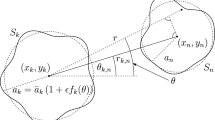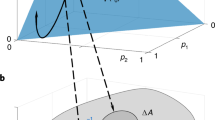Abstract
IN your issue of October 8 Prof. John Perry describes in a letter “an exceedingly simple, ingenious method” of plotting the so-called polytropic curve representing the law pvn = constant, which method he found in a pamphlet by Mr. E. J. Stoddard, of Detroit. I may be permitted to state that this method was published for the first time eighteen years ago by Prof. E. Brauer in the Transactions of the Society of German Engineers, 1885, p. 433, and since Prof. Brauer's publication this method has been used in a number of treatises on thermodynamics published in Germany and France. It has been given for years in the very valuable handbook “Huette,” which is undoubtedly known to Prof. Perry. Is it not surprising that a method which Prof. Perry himself considers very important should have to reach England from Germany by the circuitous path of the United States?
This is a preview of subscription content, access via your institution
Access options
Subscribe to this journal
Receive 51 print issues and online access
$199.00 per year
only $3.90 per issue
Buy this article
- Purchase on Springer Link
- Instant access to full article PDF
Prices may be subject to local taxes which are calculated during checkout
Similar content being viewed by others
Author information
Authors and Affiliations
Rights and permissions
About this article
Cite this article
BEHREND, B. Expansion Curves. Nature 69, 56–57 (1903). https://doi.org/10.1038/069056b0
Issue Date:
DOI: https://doi.org/10.1038/069056b0
Comments
By submitting a comment you agree to abide by our Terms and Community Guidelines. If you find something abusive or that does not comply with our terms or guidelines please flag it as inappropriate.



